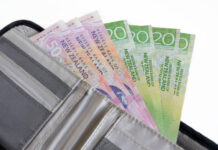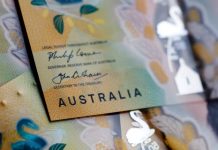Markets
US Treasuries went into full sell-off mode again, especially during yesterday’s US session. In absence of genuine market drivers, it proves that underlying bond sentiment is still bearish with any correction (eg on Fed comments, Israel-Hamas, Ackman tweet,…) short-lived. A tailing $52bn 5-yr Note auction added to the move in the end. US yield closed up to 14.8 bps higher at the 30-yr tenor with both real yields and inflation expectations on the rise. From a technical point of view, the US 10-yr yield has its eyes on the psychologic 5% mark again. The bond sell-off added to early weakness on US stock markets where Nasdaq immediately underperformed following Alphabet earnings. Key US indices closed 0.3% (Dow) to 2.4% (Nasdaq) lower. The S&P 500 and Nasdaq posted new sell-off (closing) lows. The dollar had its moment of shine on Wednesday, but was not really able to build out gains. The move accelerates again this morning as USD/JPY pierces through the 150-level, adding pressure on the Bank of Japan. The trade-weighted dollar currently changes hands around 106.75 compared to 106.25 yesterday morning. EUR/USD trades below 1.0550 from 1.06. German yields rose 3.1 bps (2-yr) to 7.3 bps (30-yr). Sterling underperformed other majors in yesterday’s climate, with EUR/GBP moving further away from the technical 0.87 pivot (currently 0.8730).
“Based on its current assessment, the Governing Council considers that the key ECB interest rates have reached levels that, maintained for a sufficiently long duration, will make a substantial contribution to the timely return of inflation to the target.”, was introduced in the ECB’s policy statement after a solid majority voted to raise the deposit rate to 4% in September. We don’t expect this guidance to be altered today when the ECB skips a rate hike for the first time since the tightening cycle started in July of last year. Weak growth momentum (see PMI’s), tightening financial conditions (ECB credit survey), disinflationary forces (as expected) and the increase in long term bond yields defend the status quo. While the central bank will officially stick to its tightening bias, we think that ECB Lagarde will face a difficult task convincing investors/the front end of the curve. A rally in longer term bonds seems less likely while the euro faces an uphill battle. Any talk on accelerating liquidity reduction (eg halting PEPP reinvestments) is a wildcard.
News & Views
The Bank of Canada stood pat for a second meeting straight. With policy rates at 5% currently, Governing Council noted growing evidence of dampening economic activity easing price pressures. Consumption has been subdued and investment weighed down. The labour market remains on the tight side and wage pressures persist. However, recent job gains didn’t match labour force growth and job vacancies have continued to ease. Overall, a range of indicators suggest that supply and demand in the economy are now approaching balance. Near-term weakness leads to a smaller expansion than expected in July for this year (1.2% vs 1.8%) and the next (0.9% vs 1.2%) followed by a pickup in late 2024 and through 2025. The BoC said headline inflation was particularly volatile in recent months. Near-term inflation expectations and corporate pricing behaviour are normalizing only gradually and wages are still growing around 4% to 5%. Measures of core inflation show little downward momentum. CPI was revised higher for 2023 and 2024 because of higher energy prices and persistence in core inflation. While it still should ease towards 2% in 2025, Governing Council expresses concern about the slow progress towards price stability against the background of increased inflationary risks. That’s why it holds on to a tightening bias. Money markets don’t buy it though, attaching only a 40% probability for a final hike in January. The Canadian loonie slipped against an overall strong USD yesterday. USD/CAD closed just shy of the 1.38 big figure and is trying to push through this morning.
South Korean GDP growth beat expectations by growing 0.6% q/q in Q3 this year, matching the previous quarter’s pace. Its economy is now 1.4% bigger than in the same period last year. Net exports were the dominant driver but household consumption and business investment grew as well. Government consumption rose too, even as the administration flagged the need for keeping a lid on its expenses. Today’s outcome offers arguments for the Bank of Korea to keep policy restrictive for long enough, especially given that inflation, both headline (3.7% in September) and core (3.3%), are still well above the 2% target. The South Korean won this morning loses territory but that’s mainly because of the strong US dollar. USD/KRW rallies to 1359.4, up from 1349.45 at the close yesterday.














